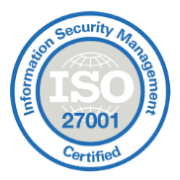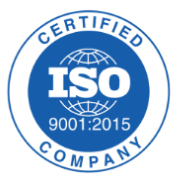There are many tools available in the market that you can use to connect with your customers. It offers a variety of tools for customer service, marketing, sales, and collaboration, as well as a platform for custom app development. Many associations are using Salesforce to manage member relationships, streamline processes, and improve communication with their members.
One of the main benefits of using Salesforce LMS for associations is that it provides a centralized database of information about members, including contact information, membership status, and payment history. This allows associations to easily access and update member information, as well as track and analyze member engagement.
Salesforce can be integrated with an LMS in a number of ways. For example, Salesforce can be used to manage user enrollment, track progress through courses, and provide reports on learners’ performance. Salesforce can also be used to manage customer relationships with educational institutions, including tracking customer inquiries, managing customer accounts, and providing customer support.
Overall, integrating Salesforce with an LMS can provide organizations with a more comprehensive and integrated solution for managing their educational programs and customer relationships.
What is Salesforce?
Salesforce is a popular CRM platform that is used by many businesses to manage customer relationships and track customer data. It offers a wide range of features such as sales automation, customer service management, marketing automation, and analytics. Salesforce also provides integrations with other business systems and tools, allowing users to connect and manage all of their customer data in one place.
What is Salesforce used for?
Salesforce is primarily used for customer relationship management (CRM) and sales management. It helps businesses track and manage customer interactions, sales data, and customer information in one place. It also provides tools for automating marketing tasks, managing customer service inquiries, and collaborating with team members.
Here are some specific ways that Salesforce is used:
- Sales management: Salesforce helps sales teams track leads, manage pipelines, and close deals. It provides a centralized place to store customer information and sales data, and it offers tools for forecasting, reporting, and analyzing sales performance.
- Customer service: Salesforce provides tools for managing customer service inquiries, including a customer service platform and a knowledge base. It also offers tools for tracking customer interactions and managing customer service teams.
- Marketing automation: Salesforce provides tools for automating marketing tasks, such as email campaigns, social media marketing, and lead generation. It also offers tools for analyzing the effectiveness of marketing campaigns and understanding customer behavior.
- Collaboration: Salesforce offers tools for collaborating with team members, including file sharing, project management, and team communication.
- Analytics and reporting: Salesforce provides tools for analyzing and reporting on data, including dashboards, charts, and reports. It also offers tools for data visualization and business intelligence.
- Data security: Salesforce provides tools for securing customer data, including encryption, access controls, and data backup.
Using Salesforce LMS: 5 Membership Management Strategies
Here are five strategies for using Salesforce for membership management:
- Centralize member data: Use Salesforce to store and manage all member data in a centralized location. This can include contact information, membership level, renewal dates, and any other relevant information.
- Automate renewals: Use Salesforce to automate the renewal process for memberships. This can include sending renewal reminders, processing payments, and updating membership status.
- Segment members: Use Salesforce to segment members based on various criteria, such as membership level, location, or interests. This can help you tailor your communication and offerings to specific groups of members.
- Analyze member data: Use Salesforce’s analytics and reporting tools to gain insights from member data. This can help you understand member behavior, identify trends, and make data-driven decisions about your membership program.
- Foster engagement: Use Salesforce to engage with members and encourage participation in your organization. This can include sending targeted communication, organizing events, and providing resources or benefits to members.
Paradiso – Ultimate LMS PLatform to Integrate with Salesforce
Paradiso LMS is a learning management system (LMS) that is built on the Salesforce platform. It is designed to help organizations manage and deliver online training and education programs. Paradiso LMS includes features such as course creation and management, learner tracking and reporting, and integrations with other tools and systems. It is intended to be easy to use and flexible so that organizations can customize it to fit their specific needs and requirements.
Here are some possible reasons why an organization might choose Paradiso LMS, a learning management system (LMS) built on the Salesforce platform:
- Customization: Paradiso LMS is built on the Salesforce platform, which means that it can be customized to fit the specific needs and requirements of an organization.
- Ease of use: Paradiso LMS is designed to be easy to use, with a user-friendly interface and intuitive navigation. This can make it easier for organizations to set up and manage their training programs.
- Scalability: Paradiso LMS is a cloud-based platform, which means that it can easily scale up or down to meet the needs of an organization as it grows or changes.
- Integration: Paradiso LMS integrates with a wide variety of other tools and systems, including popular productivity apps like Google Workspace and Microsoft Office.
- Analytics and reporting: Paradiso LMS provides a range of tools for analyzing and reporting data, including dashboards, charts, and reports. This can help organizations gain insights and make data-driven decisions about their training programs.
- Security: Paradiso LMS provides tools for securing training and education data, including encryption, access controls, and data backup. This can help organizations protect sensitive information.
Final Thoughts:
Integrating Salesforce with Paradiso LMS can offer a number of benefits, including a centralized database of member information, improved communication with members, and streamlined learning and training processes. To get the most out of Salesforce for association management, it is important to carefully consider the specific needs and goals of your organization and seek the guidance of an LMS vendor.

















